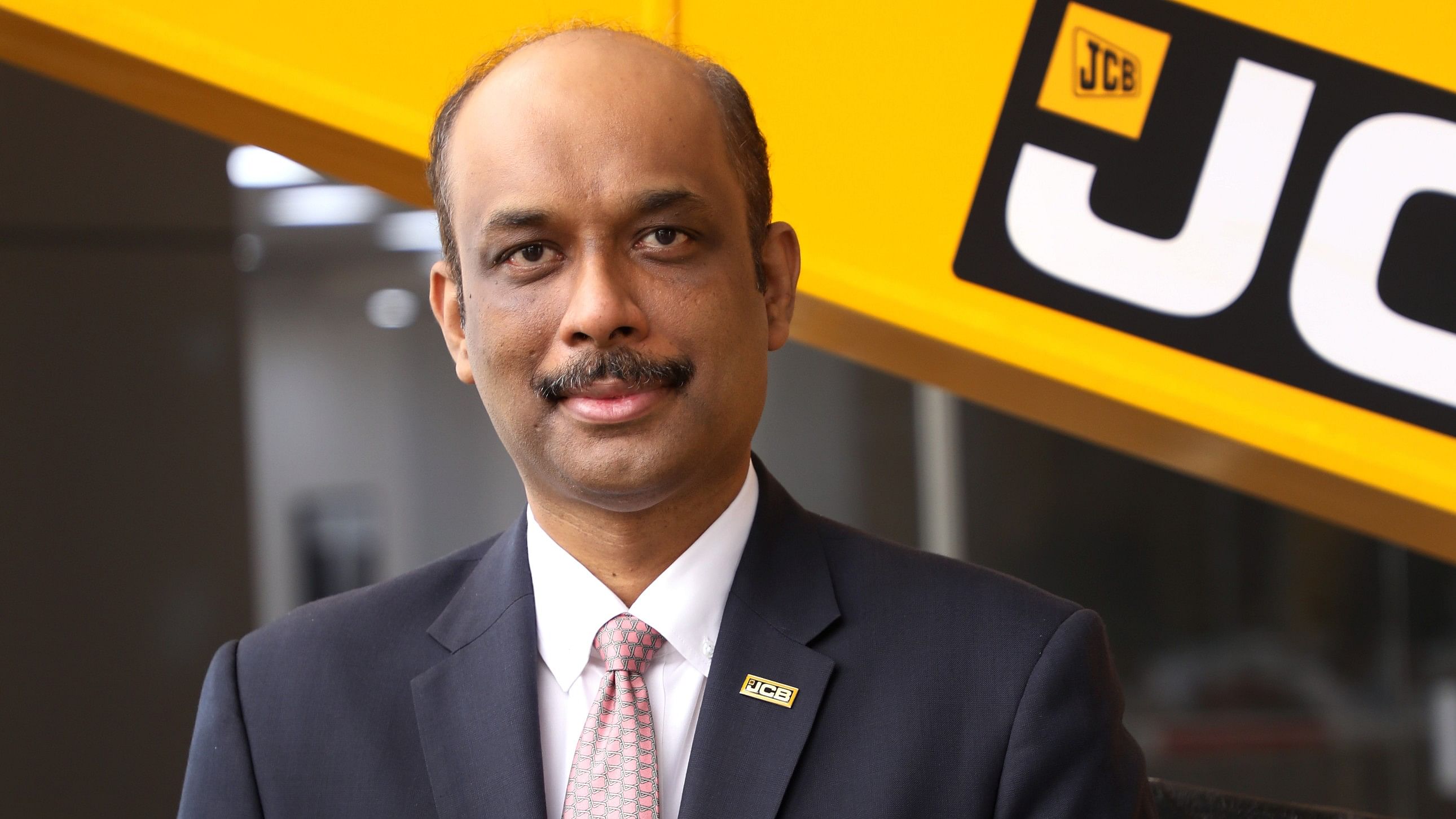
JCB India CEO and MD Deepak Shetty.
Credit: Special Arrangement
Bengaluru: While the world is in a frenzied rush to decarbonise, the construction equipment industry has been slow to join the race. One of the critical reasons for this is quoted as the high price of alternative fuel such as hydrogen. Yet, taking a step in that direction, earlier this week, the British multinational J C Bamford Excavators Limited’s India-arm, launched the prototype for its first hydrogen-powered backhoe loader, part of a £100 million investment in the emerging segment. On the sidelines of the launch in Bengaluru, JCB India’s chief executive officer and managing director Deepak Shetty, spoke to DH’s Lavpreet Kaur on the commercial viability of these vehicles, the Indian market in JCB’s scheme of business and its future plans. Edited Excerpts.
Where do commercial vehicles (CVs) fit into the advent of alternative fuel experimentations?
If we look from the technology adoption point of view, the industry now understands that for smaller machines with urban applications electric vehicles (EV) are the best bet. But when the machines become larger, whether in the CV or construction equipment sector, hydrogen or CNG are the best options due to the requirement of the torque. That is why, at JCB, we first gave a CNG solution to our customers around three years back and now we are moving towards hydrogen. Similarly, we were the first to showcase a mini excavator using electric technology. We have recently launched a range of electric scissors as well. So we are not limiting ourselves to one technology. Based on the use case, we are considering various technologies.
Going forward, it will be a very good mix based on affordability and use case.
How significant is the Indian market for JCB?
India is also the largest market for JCB. Additionally, the largest number of our machines are being produced in India. Of every two machines sold in India, one is a JCB product .
Can you elaborate on your India story and your future plans here?
We have today more than 770 outlets and about 65 dealers across the country. We want to take that to 1,500 across the country in the next two years. We want to expand our reach and go closer to our customers, particularly in rural India. Our facilities are in Ballabgarh, Pune, Jaipur and a brand new one in Vadodara, which is an export-oriented unit. We are also constantly looking at enhancing the capacity as the market grows.
What are your plans for Karnataka?
In Karnataka, we have a warehouse in Bangalore, which is supporting the whole of South India and we have six major dealers. We are looking forward to having more outlets in the rural parts of Karnataka.
Market watchers say rural demand has been muted over the years but now there are green shoots. What is your view on the rural economy?
More than 65% of our machines are sold in rural India. Of these, 65% to 70% of first-time buyers. I am very heartened to see the rural economy improving, particularly in the last year. We are also seeing the benefits of various initiatives of the central government like the Pradhan Mantri Gram Sadak Yojana and Pradhan Mantri Awas Yojana. I would also say that the investments by the state governments are also improving to creation of rural infrastructure.
What are your expectations from the upcoming Union Budget?
I think the direction is set - investment in infrastructure. I don’t expect that this is going to change whether it is this budget or in the future, because there is still so much infrastructure to be created. As the Model Code of Conduct will be enforced due to the General Elections, new projects may not be announced. Maybe Q2 of the calendar year may be a bit slow, but then Q3 and Q4, will compensate. So we are expecting the growth to continue.
What do you make of the government policies for your sector?
We are really focused on developing the ecosystem around our factories. In fact, on our backhoe loader 96% of the components are local. And we have worked very closely with our supplier partners. Not only are we developing the market for our OEM by the machines that we are exporting but even the components are being exported around the world. Most of this was possible thanks to the various government schemes such as Export Promotion etc.
We have already made a request to the government for a PLI scheme for the construction equipment sector as we have for the passenger vehicle sector. Today 30% of the components are still being imported including engines. It would encourage more FDI in the sector. Secondly, emission norms are being applied to the machines on the wheels, but not on the off-road machines. If they are also covered under the same emission norms, it will create a new opportunity for export from India.
What is your outlook for the Indian construction equipment industry?
The Indian construction industry is the third largest in the world and given the infra focus by the government, it is all set to become the second largest by 2030. From about 85,000 machines today, we expect to grow to almost 2,50,000 machines.